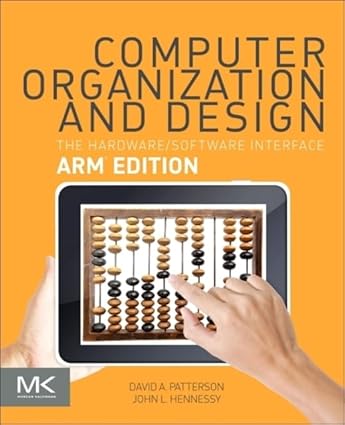Computer Organization and Design: ARM Edition - A Comprehensive Overview
Introduction
Computer Organization and Design: The Hardware/Software Interface, ARM Edition, provides a comprehensive exploration of the fundamental principles of computer architecture, focusing on the ARM architecture. This white paper aims to provide a concise overview of key concepts, use cases, and practical applications of the ARM architecture.
Understanding the ARM Architecture
The ARM architecture, renowned for its energy efficiency and versatility, has become ubiquitous in mobile devices, embedded systems, and server applications. Key features of the ARM architecture include:
- Reduced Instruction Set Computer (RISC): A simple instruction set that simplifies hardware design and improves performance.
- Load-Store Architecture: Memory access is limited to load and store instructions, reducing instruction complexity.
- Pipeline Architecture: Overlapping instruction execution to increase performance.
- Energy Efficiency: Optimized for low-power operation, making it suitable for battery-powered devices.
Use Cases of ARM Architecture
The ARM architecture's versatility has led to its adoption in a wide range of applications:
- Mobile Devices: Smartphones, tablets, and wearables heavily rely on ARM-based processors for their energy efficiency and performance.
- Embedded Systems: ARM processors are found in various embedded systems, such as IoT devices, automotive systems, and industrial automation.
- Server Applications: ARM-based servers are gaining traction in data centers due to their energy efficiency and cost-effectiveness.
- High-Performance Computing: ARM-based systems are increasingly used for scientific computing and machine learning workloads.
Key Concepts and Practical Applications
- Instruction Set Architecture (ISA): Defines the set of instructions a processor can execute, including data types, addressing modes, and instruction formats.
- Processor Design: Covers topics such as pipelining, cache memory, and memory management units.
- Input/Output (I/O) Systems: Explores the mechanisms for communication between the processor and external devices.
- Memory Systems: Discusses memory hierarchies, virtual memory, and cache coherence.
Practical Applications
- Mobile App Development: Understanding the ARM architecture helps developers optimize app performance and battery life.
- Embedded System Design: Knowledge of ARM architecture is essential for designing efficient and reliable embedded systems.
- Server Administration: ARM-based servers require specific configuration and optimization techniques.
- High-Performance Computing: Leveraging ARM-based systems for scientific simulations and machine learning workloads demands expertise in parallel programming and performance tuning.
Conclusion
Computer Organization and Design: The Hardware/Software Interface, ARM Edition, provides a solid foundation for understanding the principles and practical applications of the ARM architecture. By mastering these concepts, professionals can design, develop, and optimize a wide range of systems, from mobile devices to high-performance servers.
References:
- Hennessy, John L., and David A. Patterson. Computer Architecture: A Quantitative Approach, 6th Edition. Morgan Kaufmann, 2017.
- ARM Holdings: https://developer.arm.com/documentation
Note: To further enhance this white paper, consider incorporating specific examples, diagrams, and code snippets to illustrate key concepts and practical applications. Additionally, exploring emerging trends in the ARM architecture, such as AI acceleration and machine learning, can provide valuable insights into the future of this technology.



